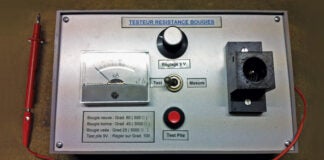Com Radio Feedback
Dear Stein Bruch: Just read your article in the August 2007 KITPLANES [regarding nav/com radios]. Nice work!
A couple of quick comments: The Garmin SL40 is indeed a fine radio, but has a truly weird memory. You can put stuff in there anyway you want, but Apollo engineers have decided their way of organizing is better than yours. They rearrange it in numerical order. So if you want home ATIS, Ground, Tower, Departure to be in memory in that sequence, you must use the LIFO (last in, first out) memory, which is destroyed the second you put an extraneous frequency in. Garmin engineers are simply unwilling to discuss a change that would bypass the subroutine that rearranges your chosen sequence. I use the SL40 in a Cub that can be flown from either seat, so getting usable memory is fairly important to me. If I can change frequencies without looking, I am in better shape.
I use a Narco 810R in my Decathlon. It has some deficiencies, most notably a lack of oomph at some points around my home airport, and a very small installation screw that has decided it needs an oversize allen wrench-but its memory circuits are perfect! You put it in the memory mode and your next frequency is one knob click away. The King KY series is among the best, and they program exactly the way the ICOM does. I think they are almost pin-for-pin interchangeable. Your next frequency in memory is a button push and a click away. Wish I had purchased a KY 197A for the Cub.
When you mentioned stand-alone navs, you forgot the Bendix/King KN-53. I have that in the Decathlon, and I absolutely love it. Actually, anything bigger would not have fit. The Narco com will not accept headset ID tones without a special network that I was unaware of when I put it in. Being an old airline type, I am absolutely freaky about identifying each nav station as I tune it, but alas, I need to do the network, or take the headset off and listen to the speaker(!).
Finally (did I say quick comments?), your comment about internal intercoms is well-taken. A friend has an ICOM so set up, and I am trying to talk him into the PS Engineering PM501, which works fine in the Cub with the door open and at full power. I love it, and it is hard to beat at below $200.
Bob Turner
Required Reading
This years AirVenture was a typically superb event. One yearly fixture is your own Wind Tunnel editor Barnaby Wainfan. This year, he gave a great presentation on the possibility of developing and offering a larger, two-place Facetmobile; a modern-day Dyke Delta. In his typically polished presentation, complete with more aerodynamic theory than most of us could ever learn in a lifetime, Barnaby included his crash survivability chart. This chart was included in a past KITPLANES issue, and shows your survivability chances in a forced landing. The two variables are impact angle (makes sense), and also wing loading, which translates directly into touchdown speed values. Following Barnabys lecture, I visited a number of kit airplane manufacturers to get an idea of whats out there in modern designs wing loading figures. Many, and some are favorites for their sleek lines, have very high wing loading values. Further investigation on the NTSB web site shows these planes to be very poor in crash survivability. Having flown high-performance planes for the Air Force, and now an airliner with very high approach, threshold and touchdown speeds, its become clear to me that being cavalier with wing loading is asking for trouble. There is no rea
son for any Experimental general aviation aircraft design to have the kinds of wing loading that can be found in some designs offered today…its not macho or cool, its dangerous. Barnabys article on crash survivability and wing loading should be required reading for anyone considering building and/or owning a new aircraft. His is the voice of science and the laws of physics. The young kit airplane salesman with his embroidered Polo shirt, gel in his hair, and slick sales pitch has only his company’s sales figures in mind.
Brad Knapp
Have a Seat, or Four
Im a private pilot and enjoy reading every issue of KITPLANES. I just have one comment though: Almost always every plane reviewed is a two-seater. Any chance some time can be spent on the four-seaters that are on the market?
Graydon Karlson
Sure enough. We’ve had four-seaters on three of the last four covers.-Ed.
Flying Ducts
The article on Paul Lipps experimentation was very interesting. As we are just making a NACA inlet for our GlaStar carburetor, I was intrigued by Lipps assertion that a snorkel inlet works better than the NACA over a range of conditions. Im wondering if perhaps Barnaby Wainfan might determine whether the added engine thrust from more inlet ram with a snorkel would overcome the added drag from the snorkel for a net gain? I assume that more snorkels would be in use if they have an advantage? A quantification of the performance differences between NACA and snorkel inlets would be of interest (at least to me).
Malcolm Knapp
Great idea. We’ll put it on Barnaby’s “to do” list.-Ed.




